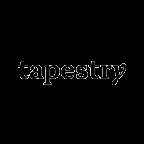Tapestry displays strong business quality through its successful brand performance and innovative product strategies, particularly with Coach. Future prospects remain positive, bolstered by growth in international markets and strategic brand development initiatives, although challenges at Kate Spade and Stuart Weitzman highlight the need for careful management. Overall, Tapestry is well-positioned for sustained growth and value creation.
Analysis Date: February 6, 2025
Last Updated: March 12, 2025
Trailing Twelve Months (TTM) values provide a view of the company's performance over the last year.
Graham Value Metrics
Benjamin Graham's value investing approach focuses on finding stocks with a significant margin of safety between their intrinsic value and market price.
Intrinsic Value
Estimated fair value based on Graham's formula
$139.31
Current Market Price: $59.25
IV/P Ratio: 2.35x (>1.0 indicates undervalued)
Margin of Safety
Gap between intrinsic value and market price
56.99999999999999%
Graham recommended a minimum of 20-30% margin of safety
Higher values indicate a greater potential discount to fair value
ROE: 31.858584240871235
ROA: 4.28025758766668
Gross Profit Margin: 72.65214569683017
Net Profit Margin: 11.742223009267457
Trailing Twelve Months (TTM) values provide a view of the company's performance over the last year.
Strong Return on Equity
The return on equity (ROE) of 31.86% reflects efficient use of shareholders' equity to generate profits, indicating strong management performance.
Healthy Operating Profit Margin
17.52
Operating Profit Margin
With an operating profit margin of 17.52%, the company demonstrates solid operational efficiency, translating revenues into profits effectively.
Net Profit Margin Concerns
A net profit margin of 11.74% may indicate that the company is facing challenges in controlling costs or competition, which could affect overall profitability.
About Profitability Metrics
Profitability metrics measure a company's ability to generate earnings relative to its revenue, operating costs, and other relevant metrics. Higher values generally indicate better performance.
Return on Equity (ROE)
Measures how efficiently a company uses its equity to generate profits
31.86%
10%
15%
Higher values indicate better returns for shareholders
TTM (as of 2025-04-16)
Return on Assets (ROA)
Measures how efficiently a company uses its assets to generate profits
4.28%
3%
7%
Higher values indicate better asset utilization
TTM (as of 2025-04-16)
Gross Profit Margin
Percentage of revenue retained after accounting for cost of goods sold
72.65%
20%
40%
Higher values indicate better efficiency in production
TTM (as of 2025-04-16)
Net Profit Margin
Percentage of revenue retained after accounting for all expenses
11.74%
8%
15%
Higher values indicate better overall profitability
TTM (as of 2025-04-16)
Adequate Liquidity Ratios
The current ratio of 1.58 and quick ratio of 1.05 indicate that the company can cover its short-term liabilities adequately, suggesting good liquidity.
Strong Interest Coverage
An interest coverage ratio of 10.08 signifies that the company generates sufficient earnings to cover interest expenses, indicating financial stability.
High Debt Levels
3.07
Debt-to-Equity Ratio
56.63
Debt-to-Assets Ratio
With a debt-to-equity ratio of 3.07 and a debt-to-assets ratio of 56.63%, the company is heavily leveraged, which may pose risks during economic downturns.
About Financial Health Metrics
Financial health metrics assess a company's ability to meet its financial obligations and its overall financial stability.
Debt to Equity Ratio
Total debt divided by total equity
3.07x
1.0x
2.0x
Lower values indicate less financial leverage and risk
Less than 1.0 is conservative, 1.0-2.0 is moderate, >2.0 indicates high risk
Q2 2025
Current Ratio
Current assets divided by current liabilities
1.58x
1.0x
2.0x
Higher values indicate better short-term liquidity
Less than 1.0 is concerning, 1.0-2.0 is adequate, greater than 2.0 is good
Q2 2025


